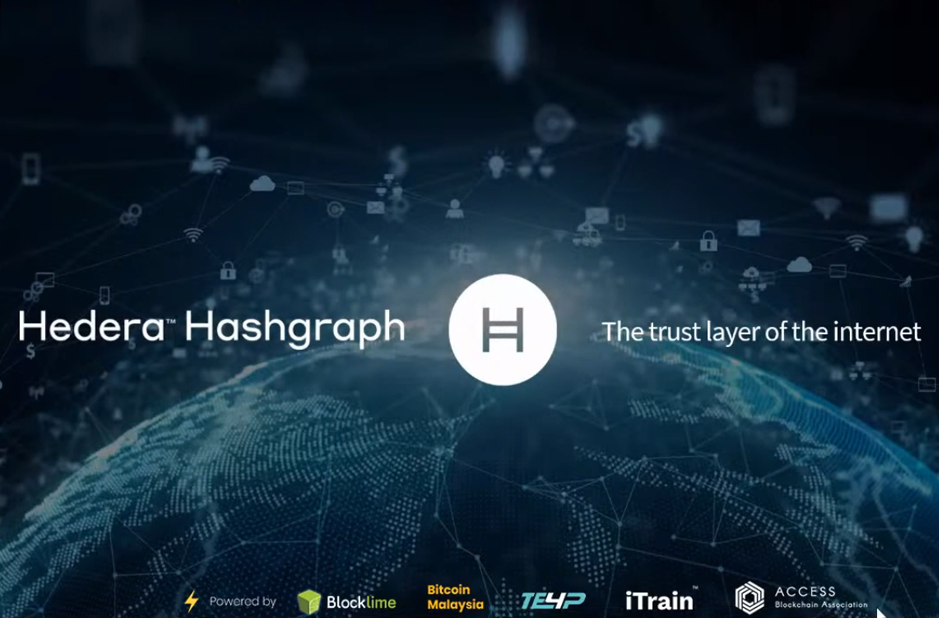Step-by-step Guide to Understanding Crypto Tokens
First it was Internet of Things (IoT), and now it’s Token of Things (ToT). With the arrival of DLT-Blockchain, the Tokenisation of ‘Things’ is the new hot topic. But what is a Token? I feel some people remain mystified.
Here’s a quick explanation of what they are in the Crypto world: A Token is pretty much anything or anyone that can participate in or be exchanged in a transaction on a DLT-Blockchain network. Be that the specifications of a diamond, the title deed of a house, a patent document, the identity of a person or organisation... pretty much anything can be Tokenised!
A Token is created using a Cryptographic One-Way-Path. That is to say, the exact description of a diamond can be cyphered into unique code, but that unique code cannot be deciphered into the description of the original diamond - only if the originator tells you. This type of cypher is called a Secure Hash Algorithm or SHA.
Unfortunately, I only took a course in Hashing at Uni to boost my postgraduate study points so I’m not an expert - just a developer using the SHA tools that are Open Source. So, the best way to understand how it works is to show you a simple example:
Step 1. Open one of the many freely available online SHA tools, e.g.
https://emn178.github.io/online-tools/sha256.html
Step 2. Into the ‘Input’ window copy/paste exactly, this sentence:
My name is Sally Smith.
You will see that the output window shows these characters:
857ee1dc920ab6251cf6cd07618926cc96ba821dc1303b4fc67c35b3b5315cc0
That is the SHA256 Token Key created for the information: My name is Sally Smith.
If you find this Code or Token Key somewhere, you can never find out that the Key equals “My name is Sally Smith.” You can only do it by guessing. This is what Blockchain Mining Rigs do :-J However, there is more chance of winning 4 Lottos in a row than guessing that “857ee1dc920ab6251cf6cd07618926cc96ba821dc1303b4fc67c35b3b5315cc0” means “My name is Sally Smith.”
Step 3. Now change the Input very slightly, by removing the ‘.’ at the end, and input that:
My name is Sally Smith.
You will notice that the Token or Key has now completely changed to:
00c0df4690c7178327a288f82ae7b767c25e349b01b711cf05944a0c7892cc42
I.e. even a very slight change in Input radically alters the Token code. Now if you add the ‘.’ back in, the Token will revert to its exact original value. This is always true.
(Note that the Output has 32 characters since this is a 256-bit SHA algorithm and because there are 8 bits in a byte, 256 / 8 = 32 (1 alphanumeric if character is 1-byte). You can use SHA384 or SHA512 which are even more heavily encrypted, but you will just end up dealing with more cumbersome Token sizes).
Step 4.Now copy/paste the following into the Input window:
My name is Tom Jones.
The Output will be:
1cc2d2f46af04749eb622335a8e579109761f3d08b1cfc07b9b68873bccb1822
Now cut/paste the following into the Input window:
Tom’s 1981 Ford Escort GLX 3-door £340.00
The Output will be:
b5041d5bffc815f48b481b48440e33393e65c843aeb6d646e2f7fb77c4a79385
Now Sally Smith, Tom Jones and Tom’s car have all been Tokenised. These facts are indisputable and will always remain 100% true.
Step 5. DLT-Blockchain networks pass along these Tokens among nodes just waiting for transactions to occur. So now in the following transaction:
857ee1dc920ab6251cf6cd07618926cc96ba821dc1303b4fc67c35b3b5315cc0
buys
b5041d5bffc815f48b481b48440e33393e65c843aeb6d646e2f7fb77c4a79385
from
1cc2d2f46af04749eb622335a8e579109761f3d08b1cfc07b9b68873bccb1822
Will mean: Sally Smith buys Tom’s Ford Escort for £340. The whole world will nod in Consensus that this fact is 100% true and valid, and no one ever knew who Sally or Tom were or that there was a Ford Escort being sold and bought. The above description is highly simplified, but I hope it gives you the general gist of Tokens and Tokenisation.
Third Generation DLT-Blockchains like Hedera Hashgraph can handle more than 10,000 of these transactions per second, costing miniscule micro-transaction fees, while using hardly any energy and are completely tamperproof with full auditability. All these capabilities are straight out-of-the-box and straightforward to implement.
For Power Transition this is how we manage the exchange of value and information among Peers or Stakeholders across an energy supply chain with very high transaction volumes. The Peers don’t even have to be people but can be machines or organisations and the Peer-to-Peer relationship can be any combination of these. An example of this is the buying and selling of energy by renewable energy generators and storage or DER (Distributed Energy Resources) to and from the National Grid to maintain the overall balance and integrity of electricity across the nation, throughout the year. Energy transactions and trading such as this can therefore be completed in a highly secure, immutable and auditable way, at very high speeds and with a low carbon footprint.
If you’d like to discuss challenges you're facing in the energy sector where tokenisation may provide part of the solution, we’d be pleased to talk it through with you. Contact us on: info@hederacoe.com










